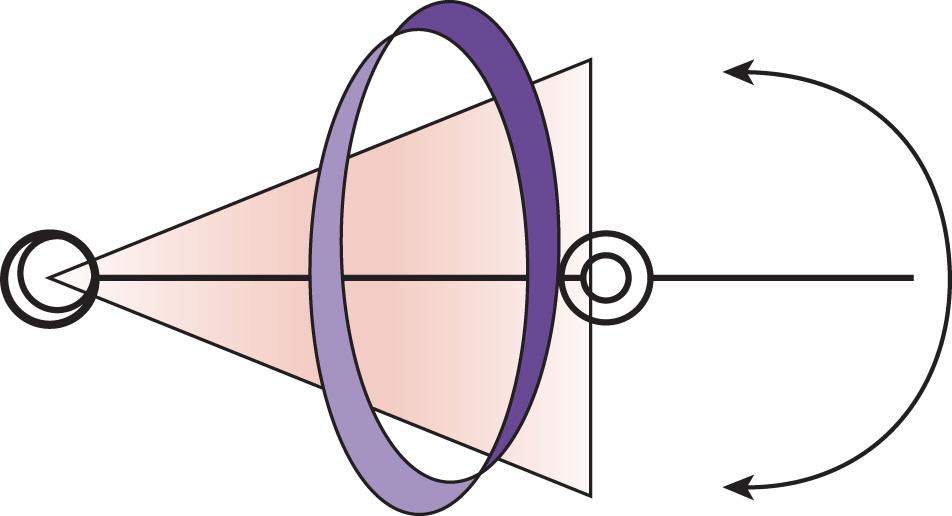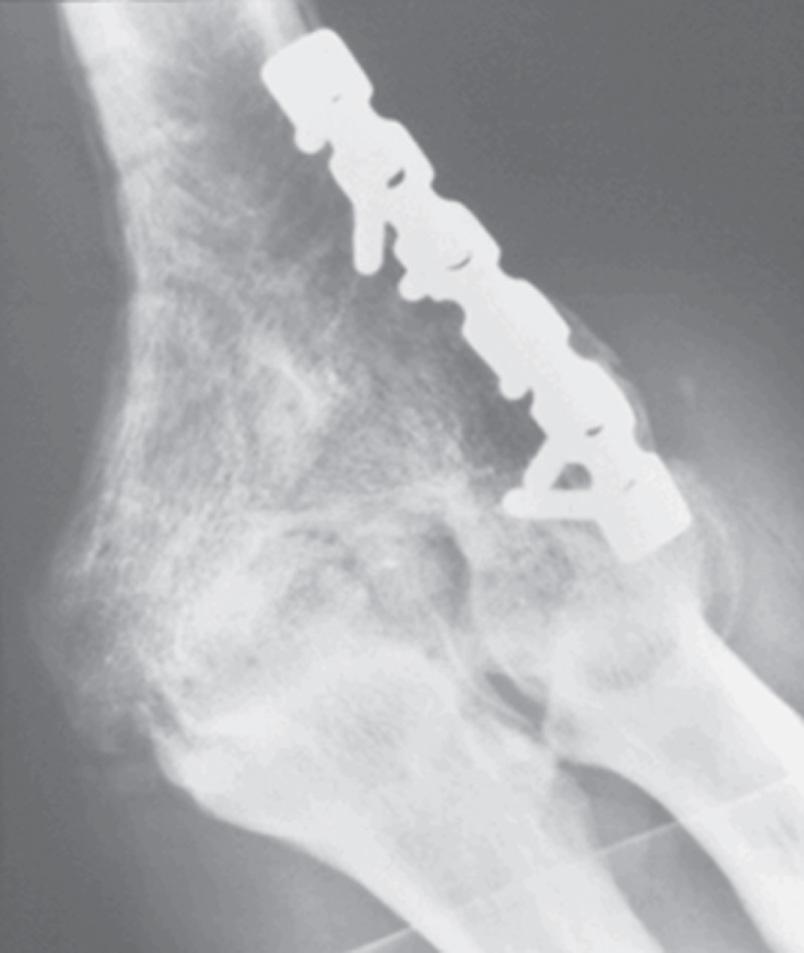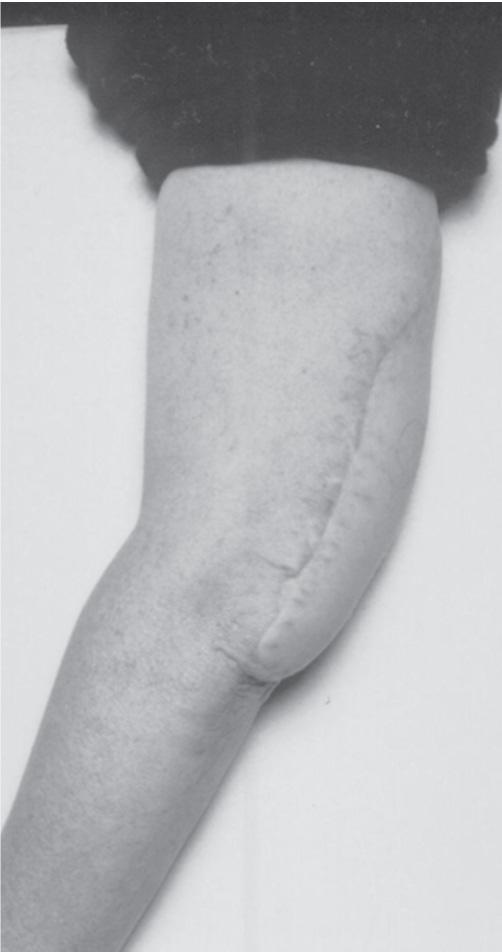Physical Address
304 North Cardinal St.
Dorchester Center, MA 02124
The ankylosed elbow occurs spontaneously after trauma or results from formal intent. In either instance, the functional outcome is generally not well tolerated since there is no “optimum” position for elbow fusion. A stiff elbow cannot move the hand in and out of space, and adjacent joints compensate poorly for loss of elbow motion ( Fig. 98.1 ; also see Chapter 3 ). For these reasons, there are continued value and interest in managing the stiff elbow by prosthetic replacement. The goal is to attain a functional arc of motion.

Elbow fusion or fibrous ankylosis is often associated with severe osseous deformity and soft tissue contracture. Hence, this most challenging pathology is managed by prosthetic replacement. For this reason, patient selection and technique are of utmost importance.
The primary goal of total elbow arthroplasty is to restore at least some form of functional motion. Ideally an older patient is a better candidate, but the functional impact of the fused elbow, comorbidities such as inflammatory arthritis, and lack of alternative solutions are the first determinants of whether the patient is a candidate for replacement.
Synostosis causing loss of forearm motion was present in a full 33% of fusion take-down procedures in our Mayo experience ( Fig. 98.2 ). In fact, additional joint involvement of the ipsilateral extremity occurred in 77%, and an isolated elbow fusion occurred in less than 10% of patients. Of further concern is the high frequency of preexisting neuropathy, and a Volkmann contracture was present in two of the Mayo series.

Ultimately, it is a matter of fully discussing, understanding, and accepting the risk-benefit proposition that justifies this difficult surgery.
Subacute sepsis is an absolute contraindication for conversion of a fused to an elbow replacement. Inflammatory markers are unreliable in indicating a chronic low-grade infection; hence a staged procedure is performed if there is any question about active infection.
Poor skin coverage is a relative contraindication and if anticipated can sometimes be mitigated by preoperative soft tissue procedures ( Fig. 98.3 ). Unwillingness to comply with the 10-kg single event/1-kg repetitive weight restriction is a reason not to perform total elbow replacement. This implies that those involved with heavy use of the extremity, such as construction workers, should not be offered this operation.

The patient's functional demands and expectations are carefully documented. The precise daily limitations and the impact to one's daily existence are documented. Presence and ability of the triceps to contract are critical for the best outcome. A complete neurovascular examination is performed. The operative time exceeds 2 hours and, in many instances, requires serial application and release of the tourniquet. The status and motion of the cervical spine, the contralateral elbow, and the ipsilateral shoulder, hand, and wrist are documented.
Become a Clinical Tree membership for Full access and enjoy Unlimited articles
If you are a member. Log in here